Are you ready to infuse your space with a touch of botanical elegance? Let’s embark on a journey to create a captivating kokedama moss ball planter. Delving into the art of kokedama offers a unique and charming way to showcase plants in your home.
How to make a kokedama moss ball planter? Join us as we delve into the step-by-step process, from selecting the perfect plant to mastering the technique of moss ball creation.
1. How to make a kokedama moss ball?
A kokedama moss ball is a traditional Japanese gardening technique where the roots of a plant are bound in moss and soil, creating a beautiful and compact ball-shaped planter. Translating to “moss ball” in Japanese, kokedama originated as a way to display plants in a minimalist and artistic manner, often hung or placed on decorative trays or dishes.
Kokedama (pronounced koh-keh-dah-mah), literally translating to “moss ball” in Japanese, is a unique and artistic approach to indoor gardening. Imagine a vibrant, thriving plant nestled within a sphere of lush green moss, meticulously crafted by hand. This captivating creation eliminates the need for conventional pots, suspending your plant mid-air or nestled in a decorative dish.
The popularity of kokedama has skyrocketed in recent years, captivating plant enthusiasts and design aficionados alike. Its undeniable charm lies in its:
- Effortless Beauty: The marriage of verdant moss and a flourishing plant creates a stunning visual spectacle that elevates any space.
- Low-Maintenance Charm: Kokedama require minimal upkeep, making them perfect for busy individuals or those new to the plant parenthood journey.
To make a kokedama moss ball for planter, you will need materials such as:
Materials:
- Plants: Choose small, compact plants with sturdy root systems, such as ferns, ivy, or bonsai trees.
- Potting mix: Use a well-draining potting mix suitable for the type of plant you’ve chosen.
- Sphagnum moss: This will be used to wrap around the plant’s roots and create the moss ball.
- Sheet moss: Sheet moss will cover the outside of the moss ball and give it a lush, green appearance.
- Twine or string: You’ll need twine or string to secure the moss and soil around the plant’s roots.
- Watering can: Prepare a watering can with water for watering your kokedama moss ball.
Step by Step:
Step 1: Prepare the materials
Gently remove the plant from its pot and gently shake off excess soil from the roots. If the roots are tightly packed, carefully loosen them to encourage them to spread out.
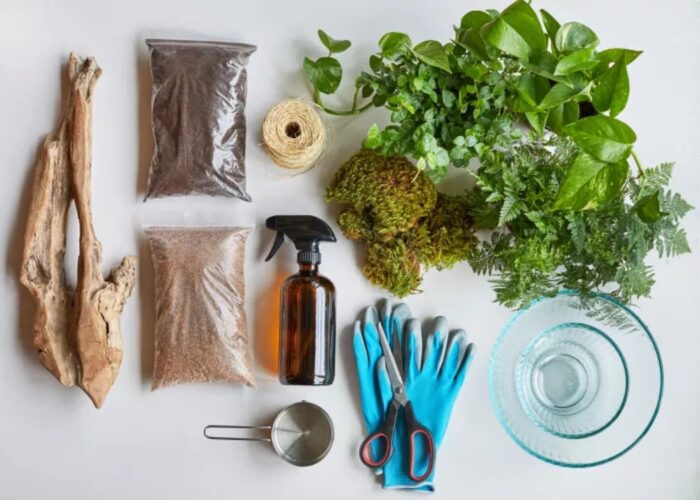
Step 2: Mix the soil
Prepare a well-draining potting mix suitable for your plant. You can mix in some sphagnum moss or perlite to improve drainage if needed.
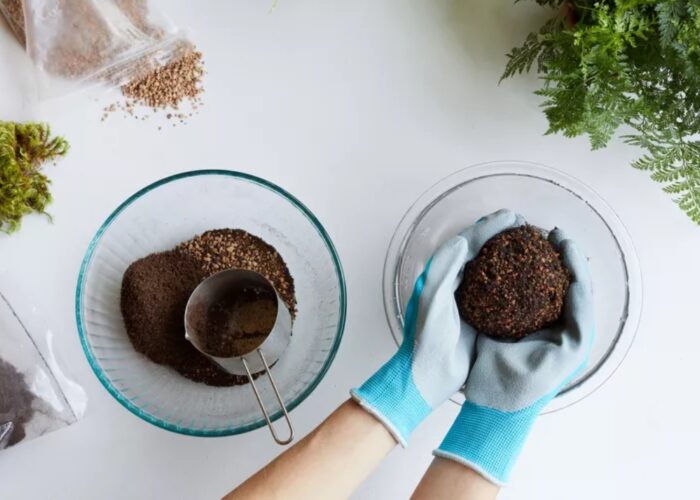
Step 3: Wrap the roots
Take a handful of sphagnum moss and wrap it around the roots of the plant, forming a compact ball. Ensure that the roots are completely covered and that the moss holds together firmly.
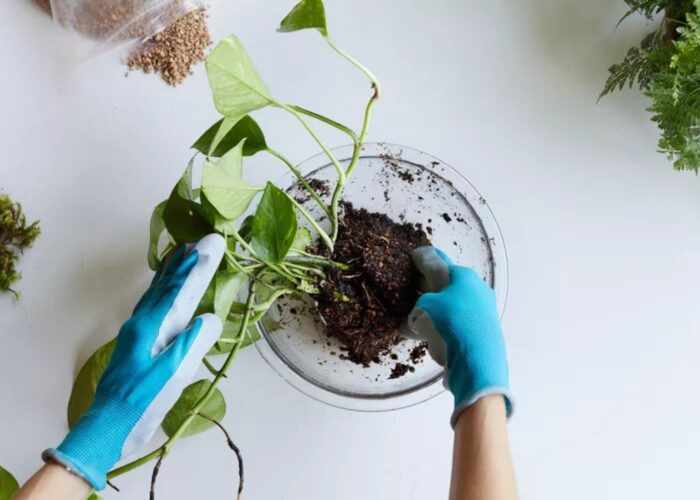
Step 4: Form the moss ball
Take a larger piece of sheet moss and wrap it around the sphagnum moss-covered roots, forming a larger ball shape. Use twine or string to secure the moss in place, wrapping it around the ball in a crisscross pattern.
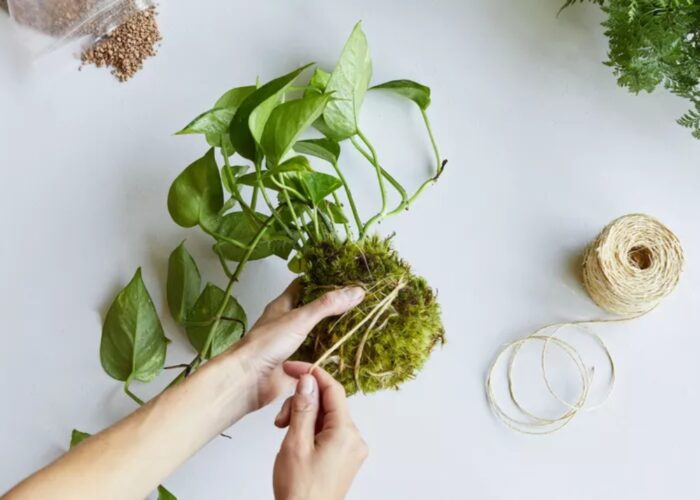
Step 5: Water the moss ball
Once the moss ball is formed, thoroughly water it to moisten the moss and soil. Allow any excess water to drain away before hanging or displaying your kokedama moss ball.
Step 6: Maintain your kokedama
Keep your kokedama moss ball in a bright, indirect light and water it regularly to keep the moss and plant roots hydrated. Mist the moss ball occasionally to maintain humidity and prevent it from drying out.
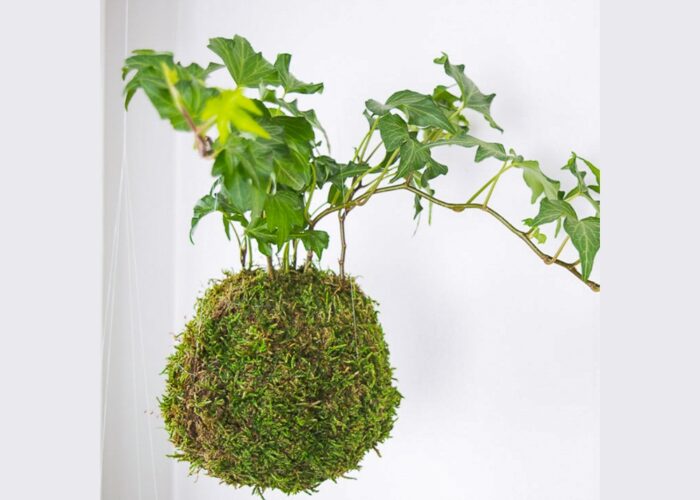
By following these steps, you can create your own beautiful kokedama moss ball, bringing a touch of Japanese-inspired elegance to your home or garden.
2. FAQs
2.1 What type of moss is best for kokedama?
The best type of moss for kokedama is sphagnum moss. Sphagnum moss is highly absorbent and retains moisture well, making it ideal for creating the compact, moist environment necessary for kokedama. Additionally, sphagnum moss has antimicrobial properties that can help promote healthy root growth in the kokedama.
2.2 How do you keep moss alive on kokedama?
To maintain moss on kokedama, it’s crucial to prioritize adequate moisture levels and suitable light conditions. Regular misting helps to keep the moss hydrated without oversaturating it. Position the kokedama in a spot with indirect sunlight to prevent the moss from drying out or scorching.
Additionally, monitor watering carefully, ensuring the soil remains consistently moist but not waterlogged. Proper air circulation also contributes to the moss’s health, so avoid overly stagnant environments. By attentively managing these factors, you can sustain lush and vibrant moss on your kokedama, enhancing its allure as a living work of art.
2.3 How long can a plant stay in kokedama?
The lifespan of a plant in kokedama depends on various factors such as the type of plant, growing conditions, and maintenance practices. Generally, most plants can thrive in kokedama for several months to a few years with proper care.
However, some plants may outgrow their kokedama or require repotting into a larger container over time. Regular monitoring of the plant’s health, including its growth and root development, can help determine when it may need to be repotted.
2.4 How often should I water my kokedama moss ball?
The frequency of watering your kokedama moss ball depends on various factors such as the type of plant, environmental conditions, and the moisture level of the moss and soil. Generally, you should aim to water your kokedama when the moss and soil feel slightly dry to the touch.
This typically occurs every 1-2 weeks, but it’s essential to monitor the moisture level regularly. Avoid overwatering, as it can lead to root rot and other issues. Instead, observe your kokedama and adjust the watering frequency as needed to maintain optimal moisture levels for healthy plant growth.
2.5 Can kokedama plants survive in low-light conditions?
Kokedama plants can survive in low-light conditions to some extent, but their growth and overall health may be compromised compared to plants in brighter light. While some low-light tolerant plants, such as pothos or peace lilies, may fare better in dimmer environments, it’s essential to provide as much indirect light as possible to support their growth.
Keep in mind that prolonged exposure to low light can cause leggy growth, leaf yellowing, or stunted development in kokedama plants.
3. Final thought
Kokedama moss ball planter offer a delightful blend of aesthetics and ease. They bring a touch of nature indoors, require minimal maintenance, and provide a creative outlet for plant enthusiasts. So, why not embark on this rewarding DIY project? With a little planning and our handy guide, you’ll be well on your way to crafting your own mesmerizing kokedama.
We encourage you to share your creations – tag us on social media and inspire others to embrace the magic of moss balls!
If you have any further questions, don’t hesitate to send thanhcongcraft an email us at info@thanhcongcraft.com or message us at WhatsApp: +84967485411. Hope to serve you soon! Best regard!


